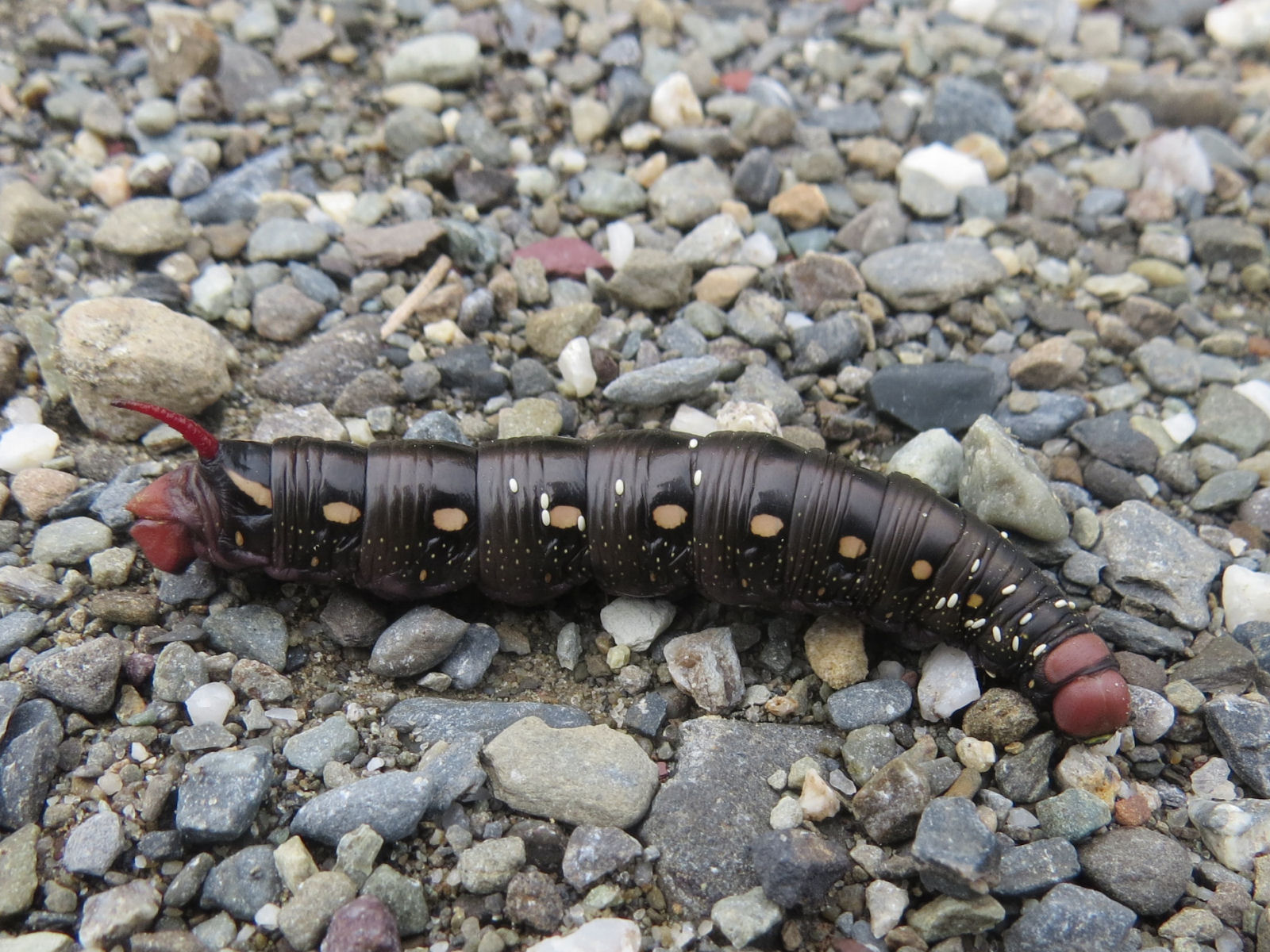
Galium Sphinx Caterpillar with Tachinid Eggs
Notes and Changes since last report
- It was 66°F, cloudy, and calm at 1:30 PM on October 6, 2021.
- There were hints of color in the leaves and smells of Fall in the air.
- Spring peepers and katydids were still calling. Mosquitos were still biting.
- This week's trail report covers the Wappinger Creek Trail side of the trail system.
The Trails
- Blue sky appeared for but a moment over the fields by Gifford House. A call came from the top of a snag along the drive to the Carriage House.
- It was of a red-bellied woodpecker. It too was soon gone.
- A Galium sphinx caterpillar was crossing the drive. The little white ovals were eggs from probably a tachinid fly - the hatchlings would consume the caterpillar from the inside.
- From the trailhead, the first serious splash of autumn color could be seen just ahead.
- On the thistles in the foreground, a ladybug prepared to take off. Actually a beetle, only its hindwings are used for flight; the forewings have been thickened into protecive elytra - the familiar, often colorful "shell" of a beetle.
- Off to the side was a weathered stalk of common milkweed pods.
- A group of small milkweed bugs (actually "true bugs") was feeding on the seeds within.
- Closer examination of the colorful tree presented a puzzle: the compound leaves were hardly familiar looking.
- The presence of samaras or "keys" insisted it was a maple. But even they were unusual: they were hairy.
- If that weren't enough, the thin, exfoliating bark was unlike that of any familiar maple. Indeed, a little web research pointed to three-flowered maple native to China and Korea.
- At the corner of the field, familiar hickory spread over the trail.
- It looked like a good year for hickory nuts.
- The husks split readily and the nuts aren't too hard to crack.
- In the back of the field, black walnuts were a different story.
- These husks are messy and the nuts are very hard.
- Up ahead on the Sedge Meadow Trail, invasive burningbush was turning pink and something was turning orange behind it.
- It was our native poison ivy.
- A little color was popping up in the Sedge Meadow proper.
- Cinnamon fern was in the foreground.
- In the background, maples were joining in.
- Farther along the path, puffballs were waiting to be stepped on to puff their spores out.
- Right next to them was a second crop on the side of tree.
- Out in the back Old Hayfield, heal-all or selfheal was one of the few flowers that still looked fresh.
- Wild basil was keeping up appearances too.
- It's always curious to find winterberry in the Old Pasture.
- The Wappinger Creek was full - of course it had rained earlier this week.
- Down the hill and along the trail, mushrooms were growing off the side of a maple.
- A little farther along were the usually velvety - but today soggy - brown mushrooms.
- As the trail went lower into the floodplain, the Creek calmed down. Leaves were only beginning to think about yellow.
- Here, invasive Japanese stilt grass was all along the path and starting to go to seed. Socks, shoes, pants, pets... all can carry seeds to start new colonies.
- Across from the bench at Trail Marker 10, witch's butter had grown just a little more than the week before.
- After a week, the neighboring mushrooms weren't looking as fresh as last week.
- Next week: the Cary Pines Trail the side of the trail system.
Sightings
Birds
| Butterflies
Caterpillars
Insects
|
